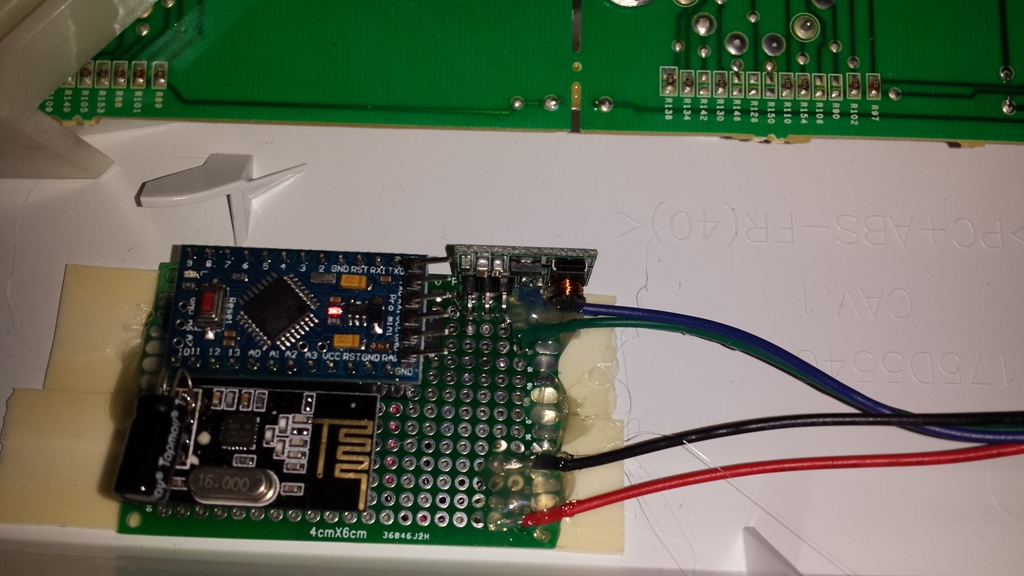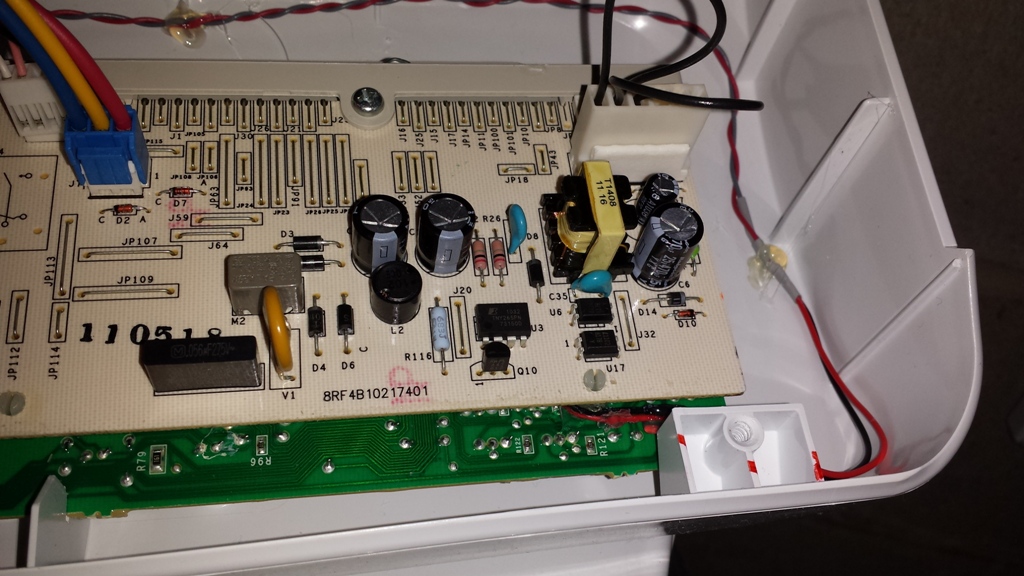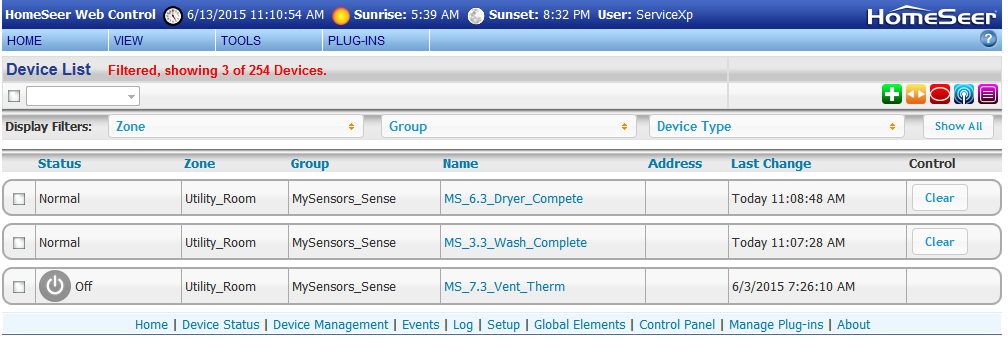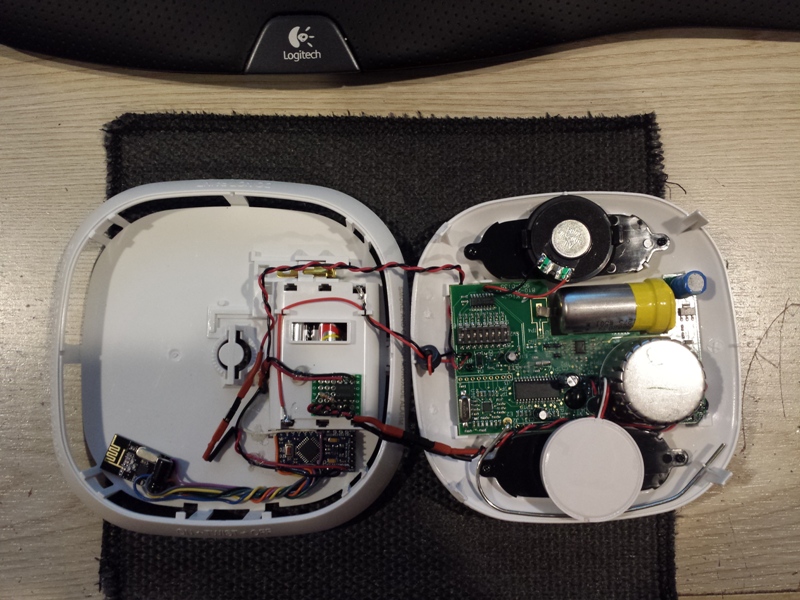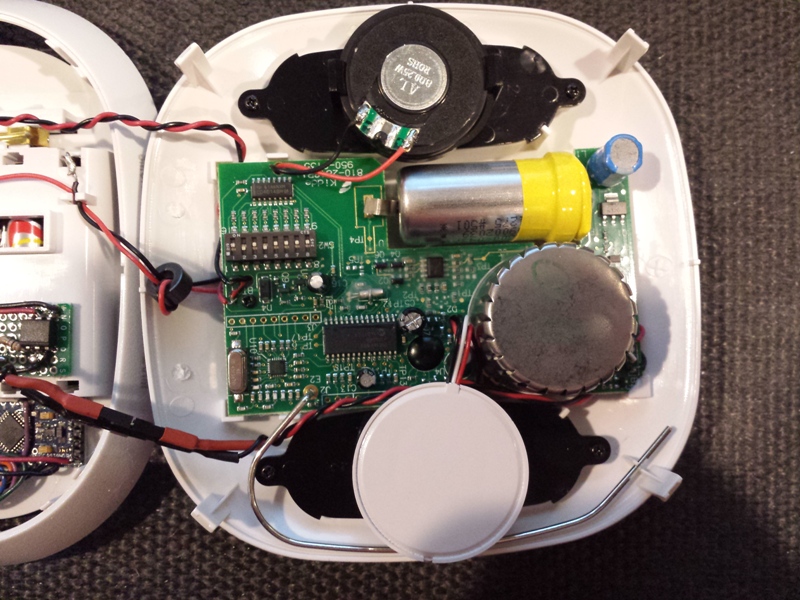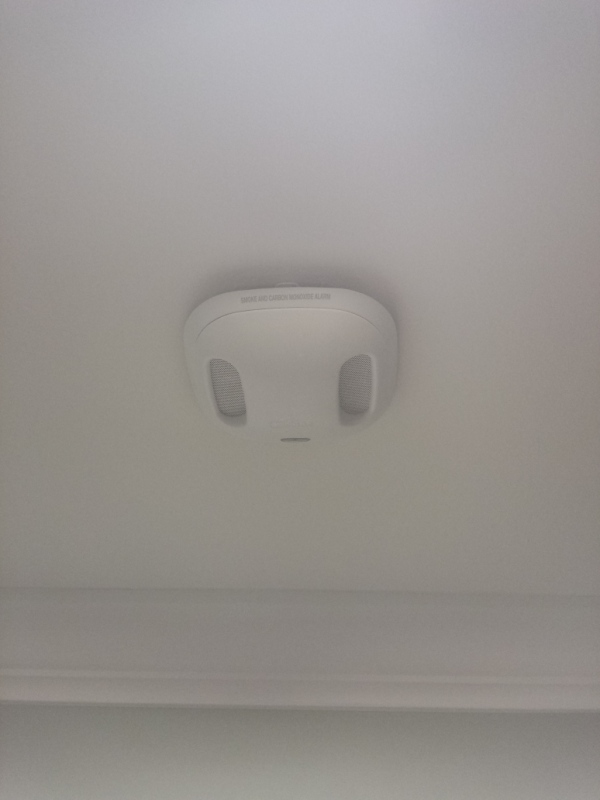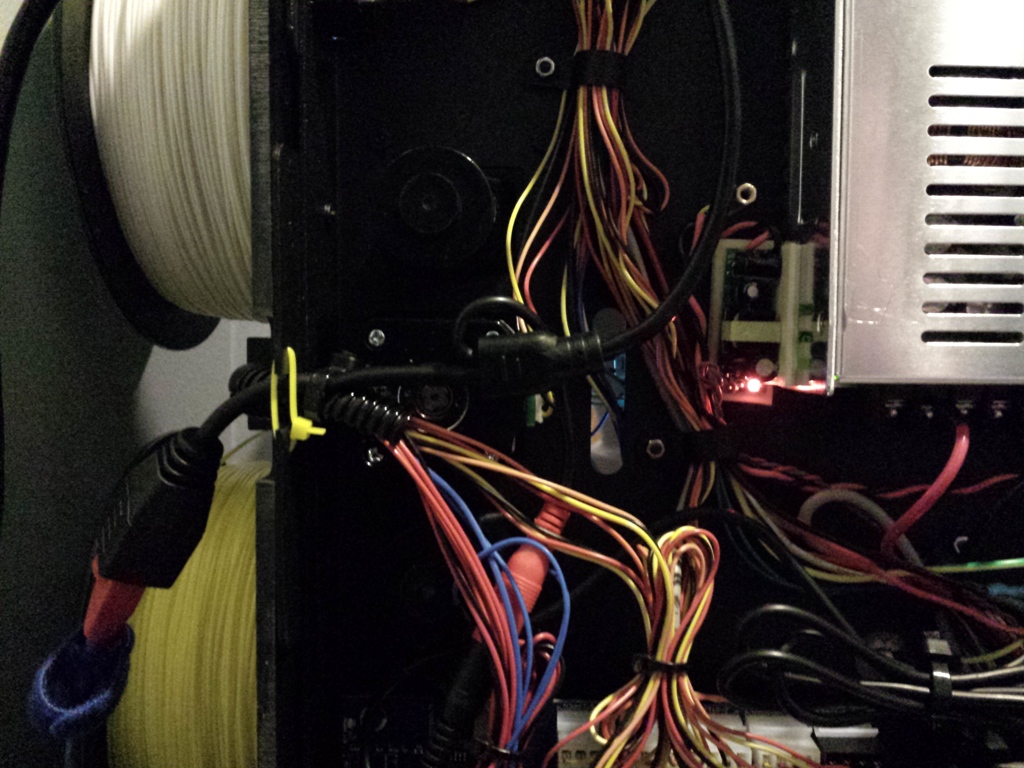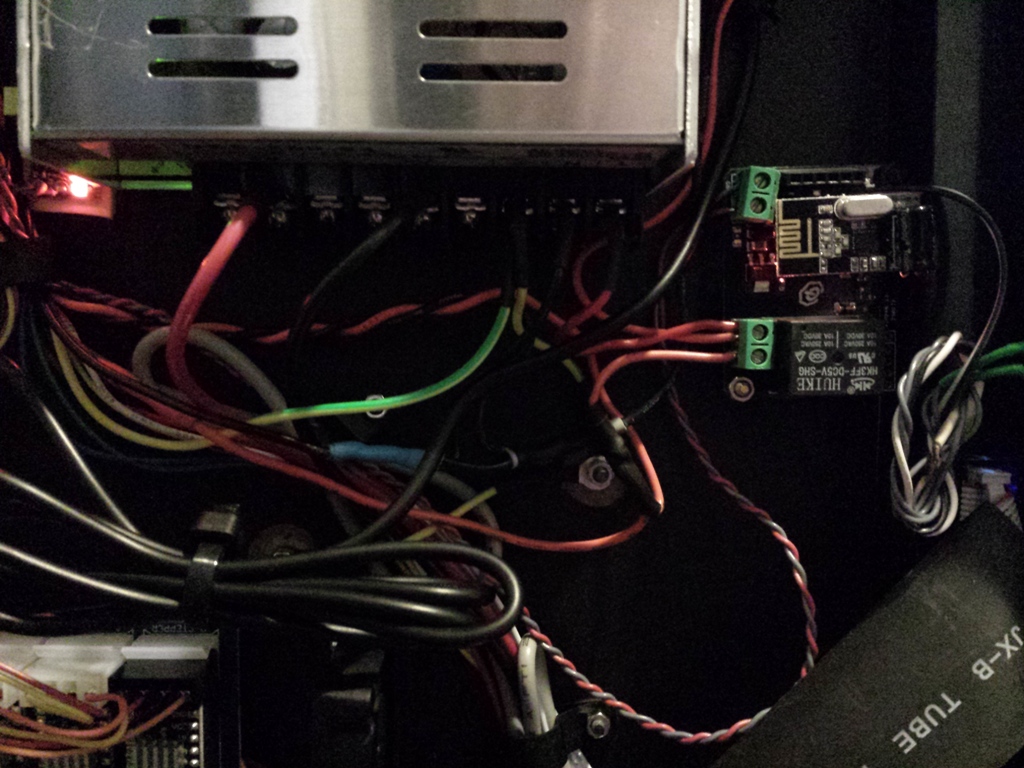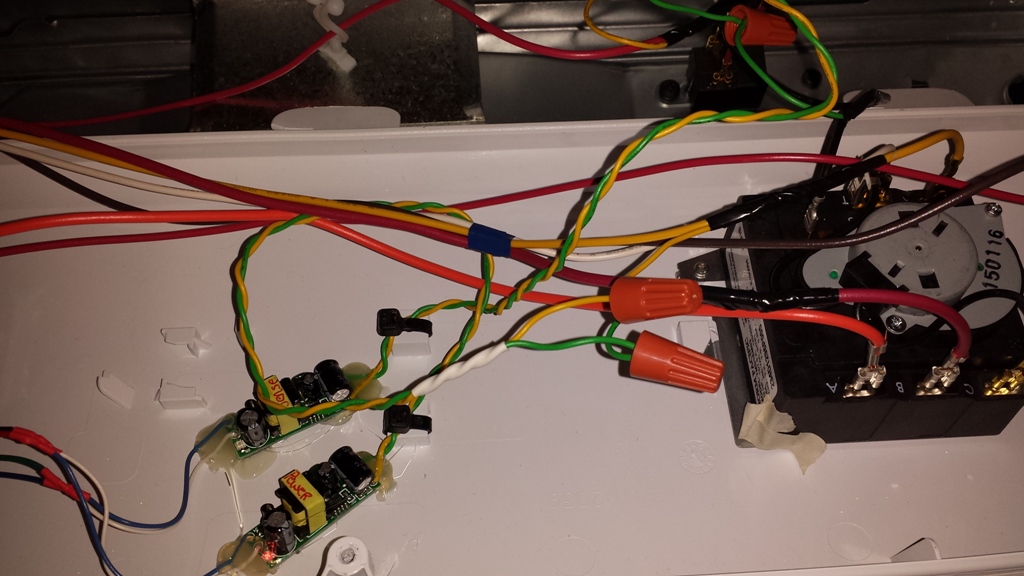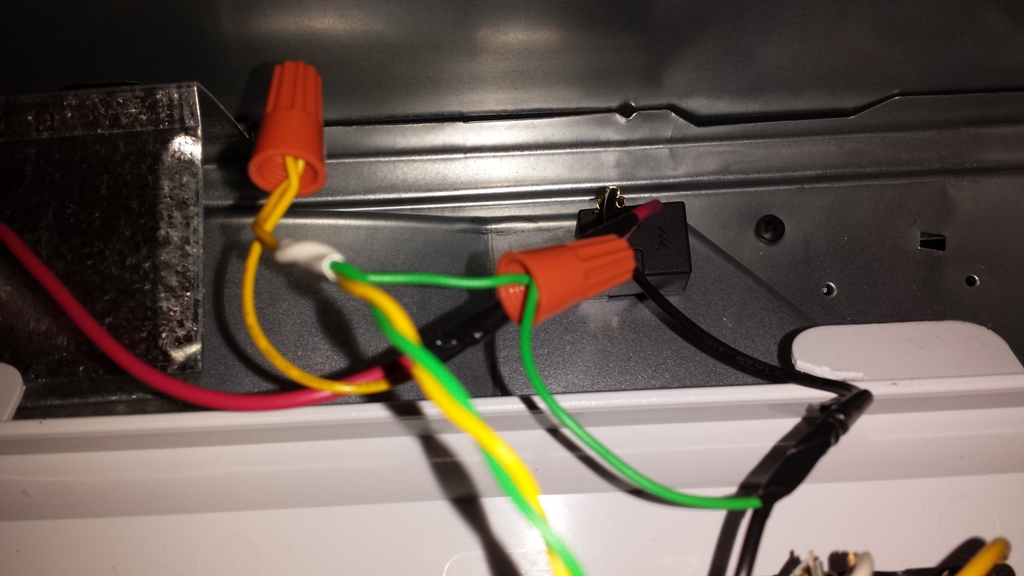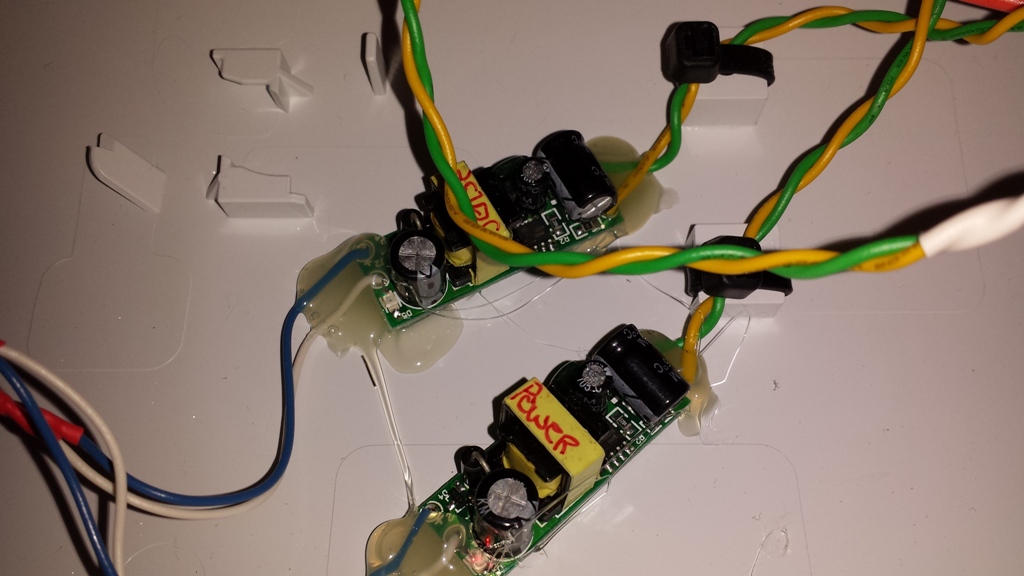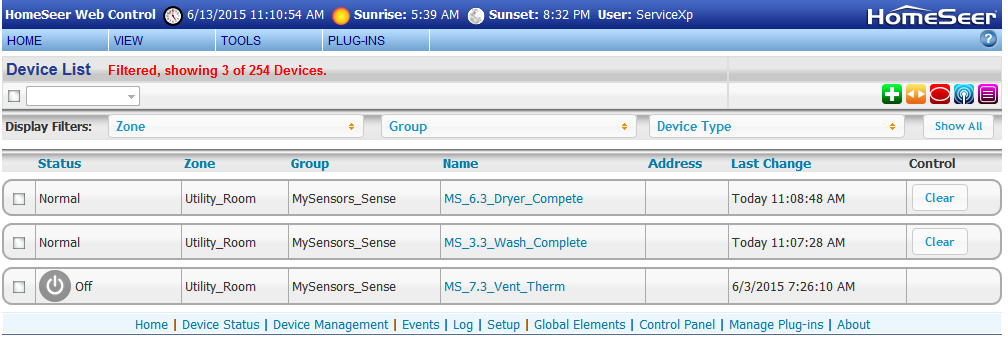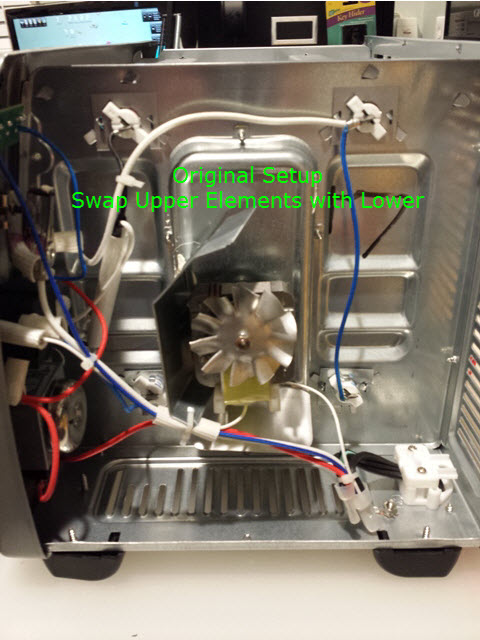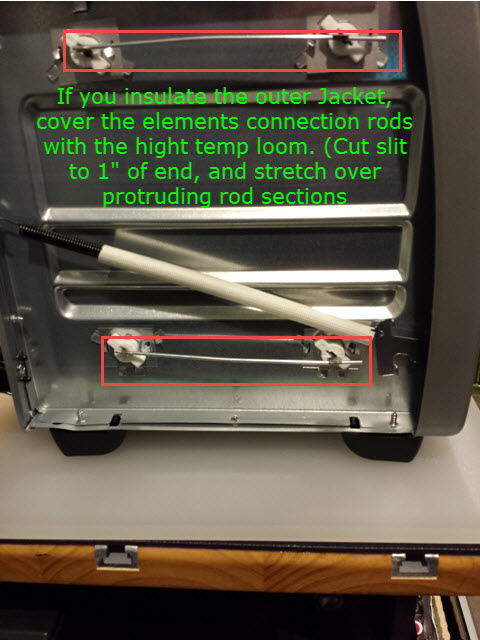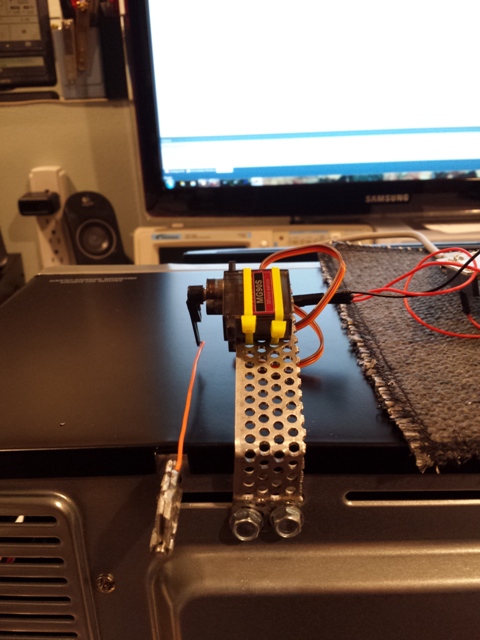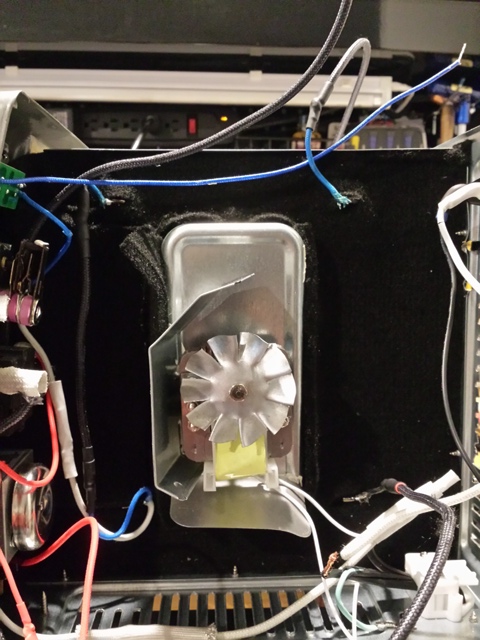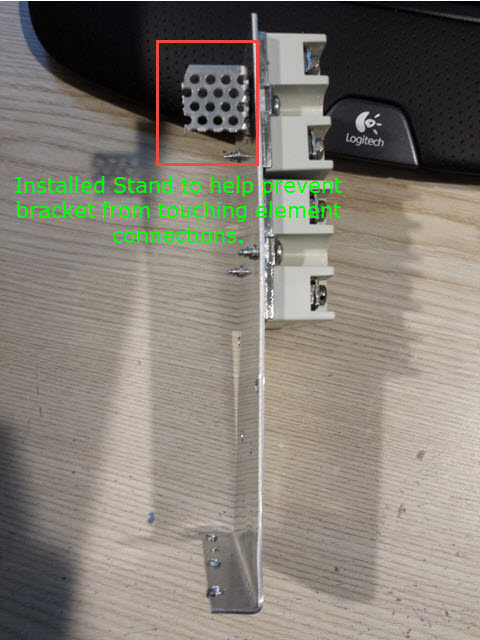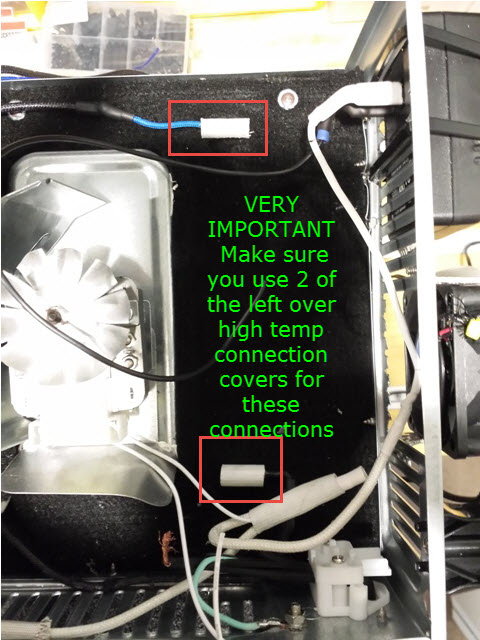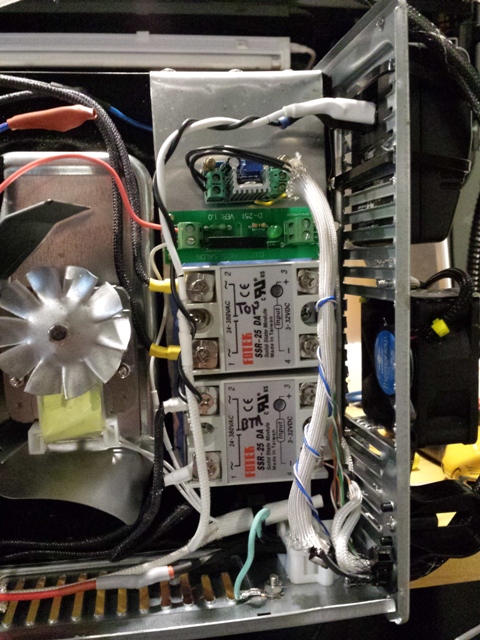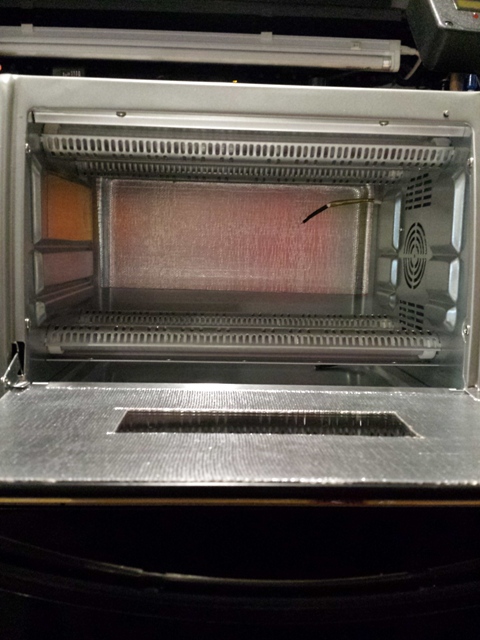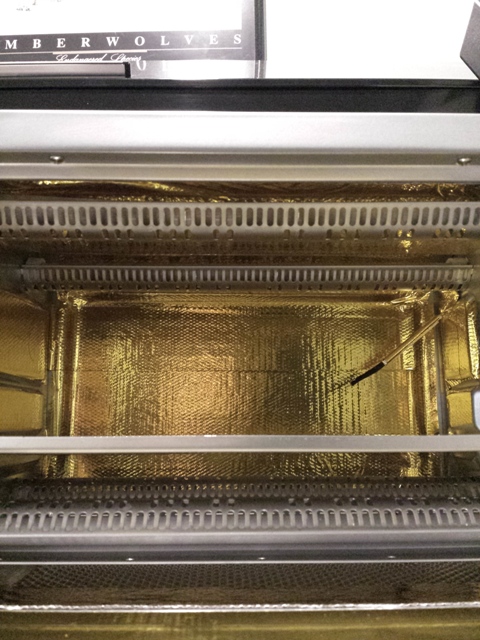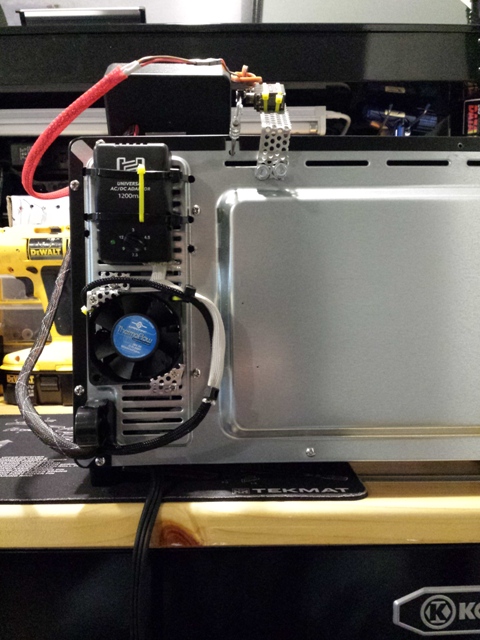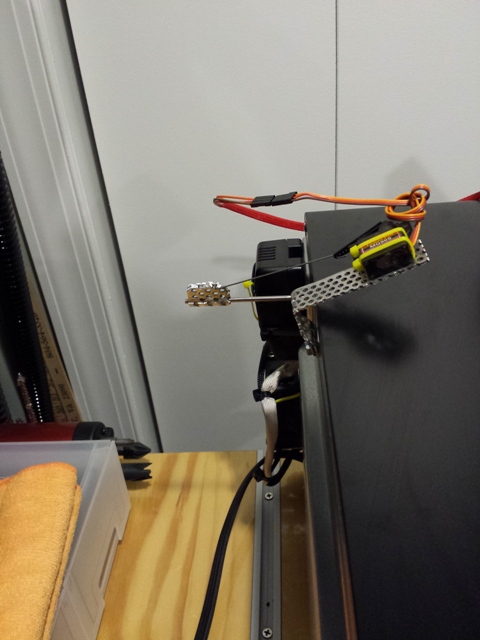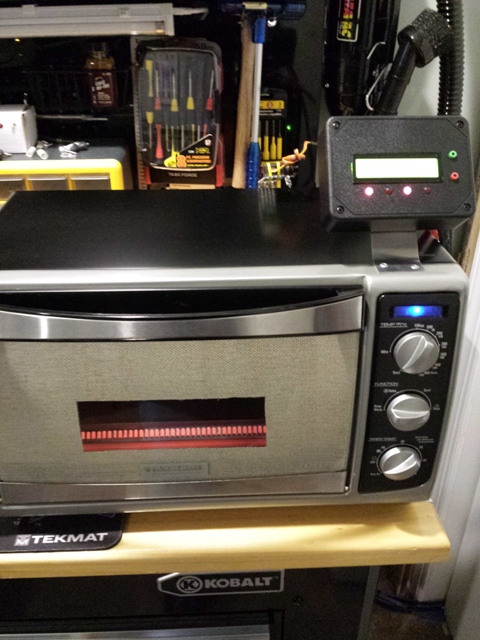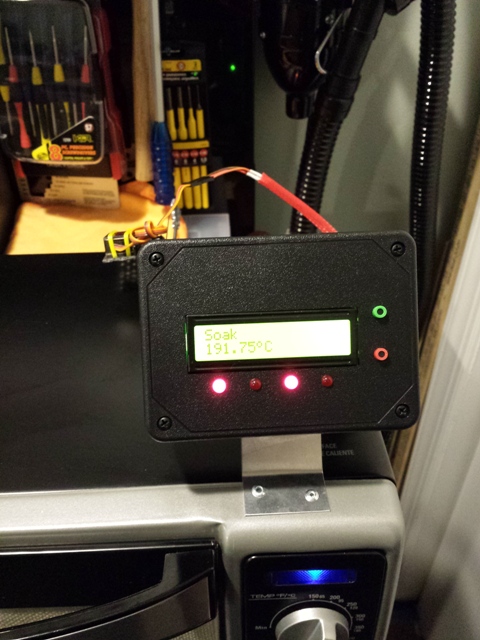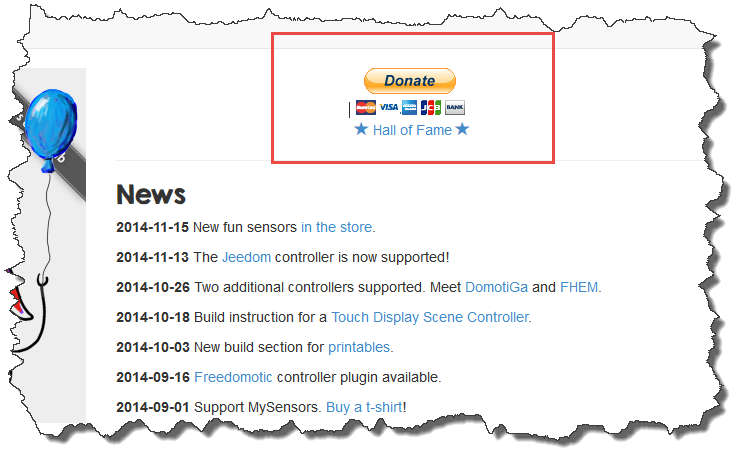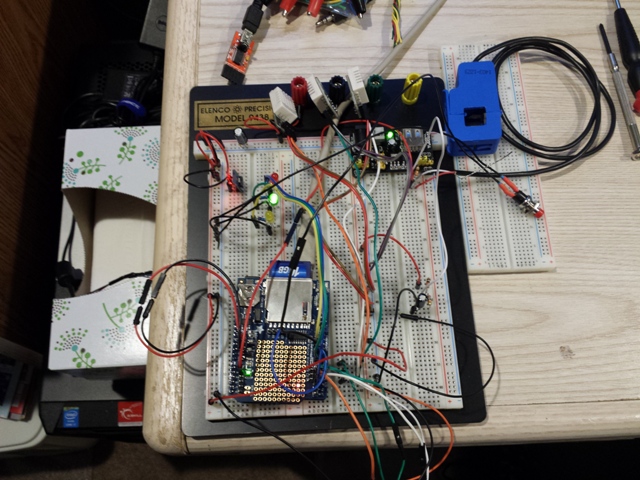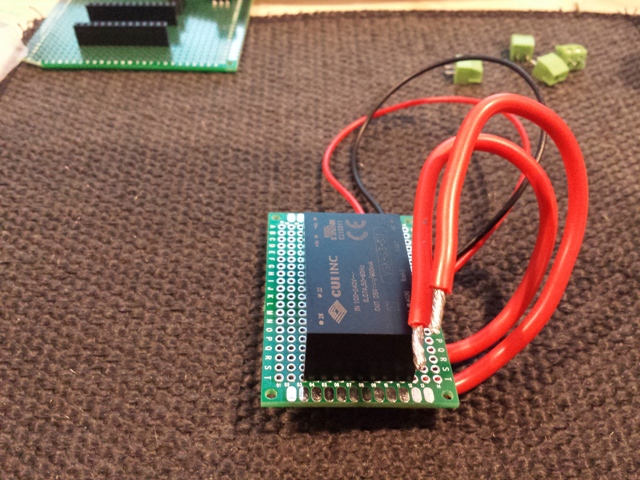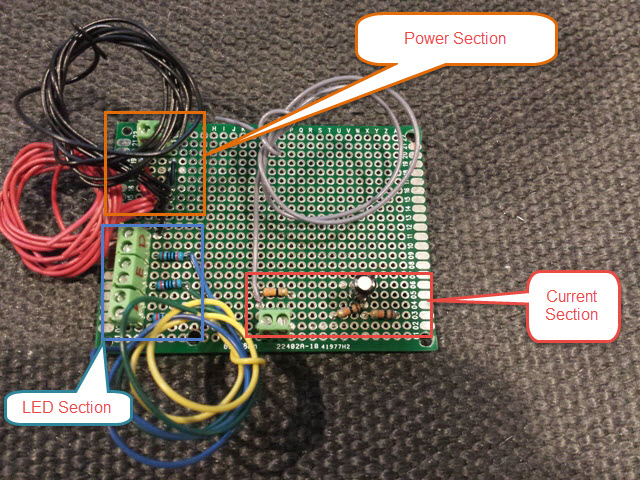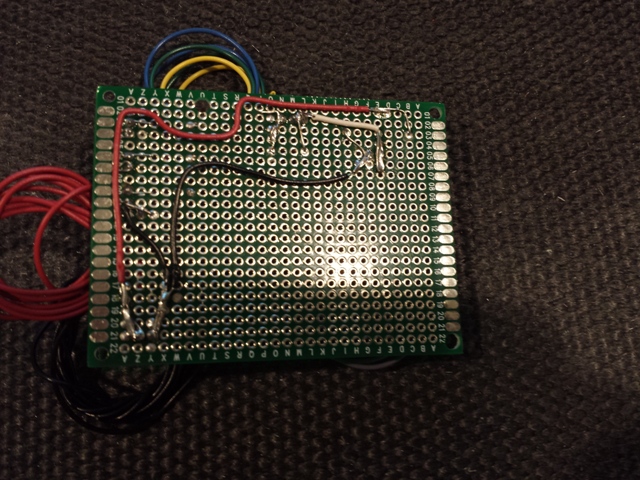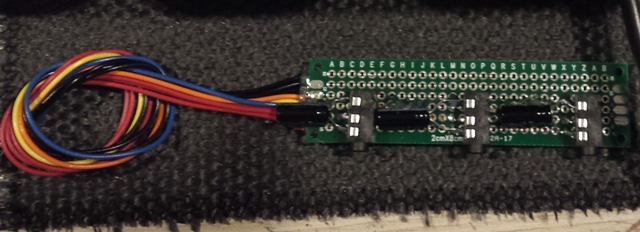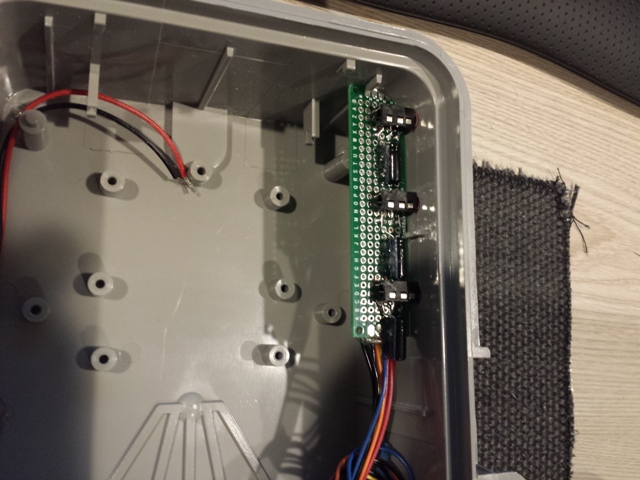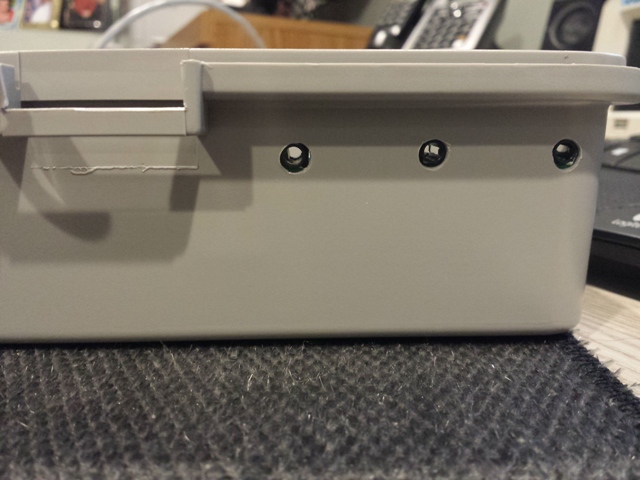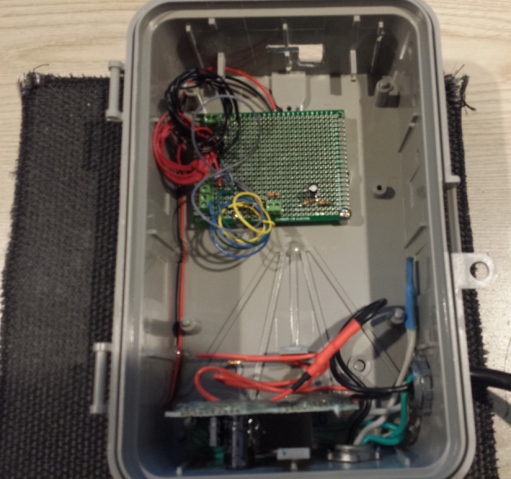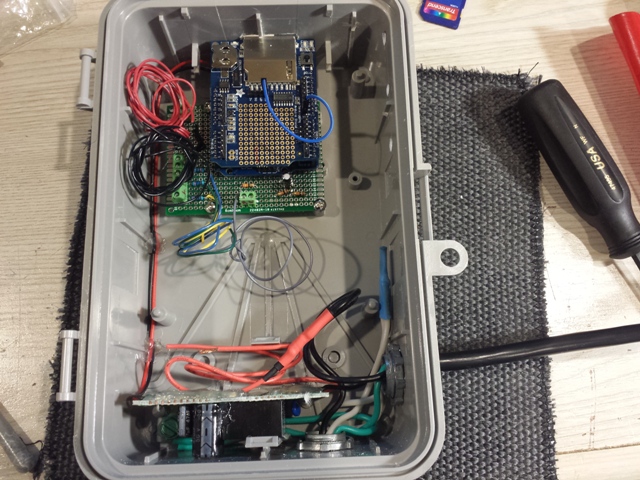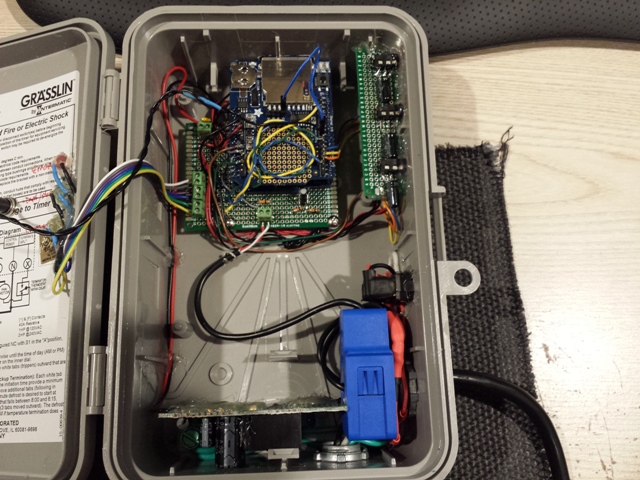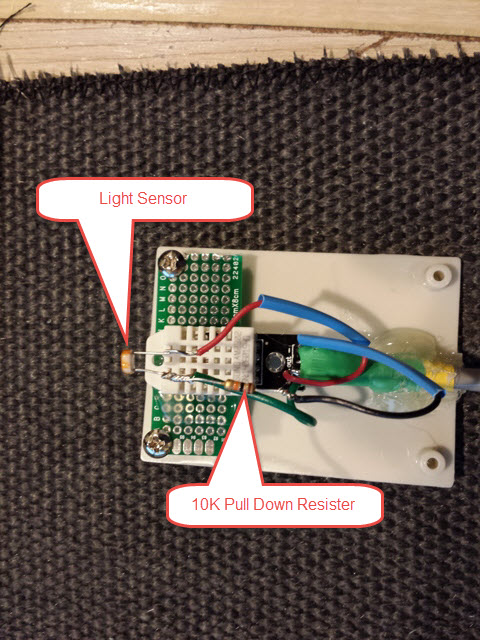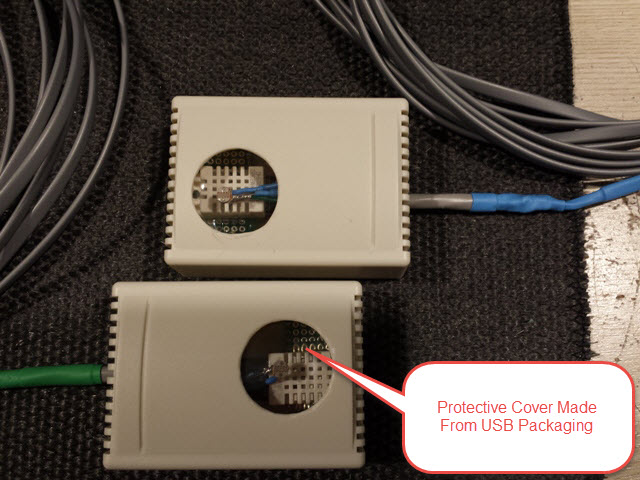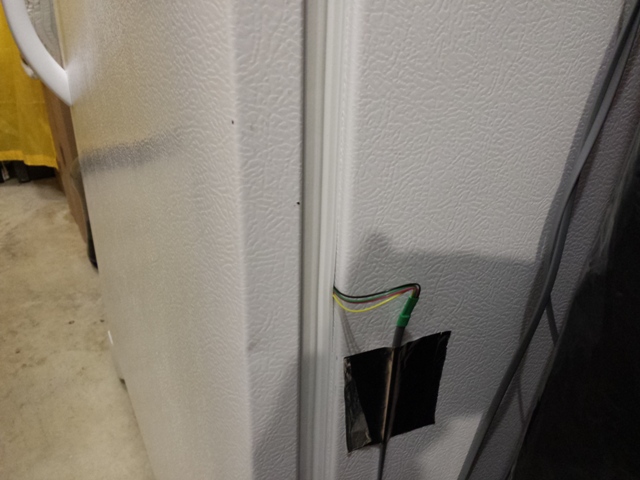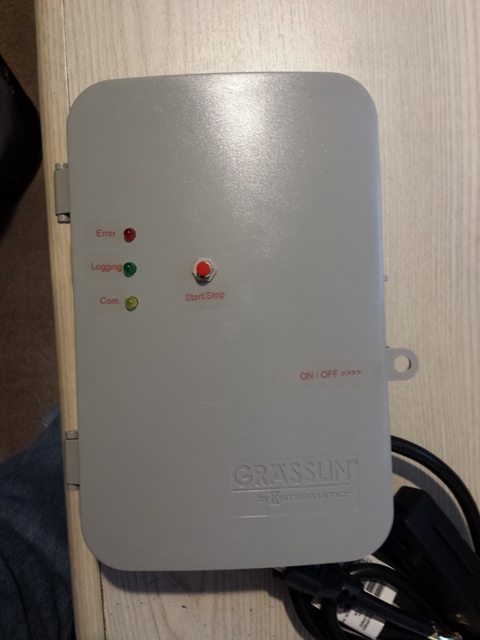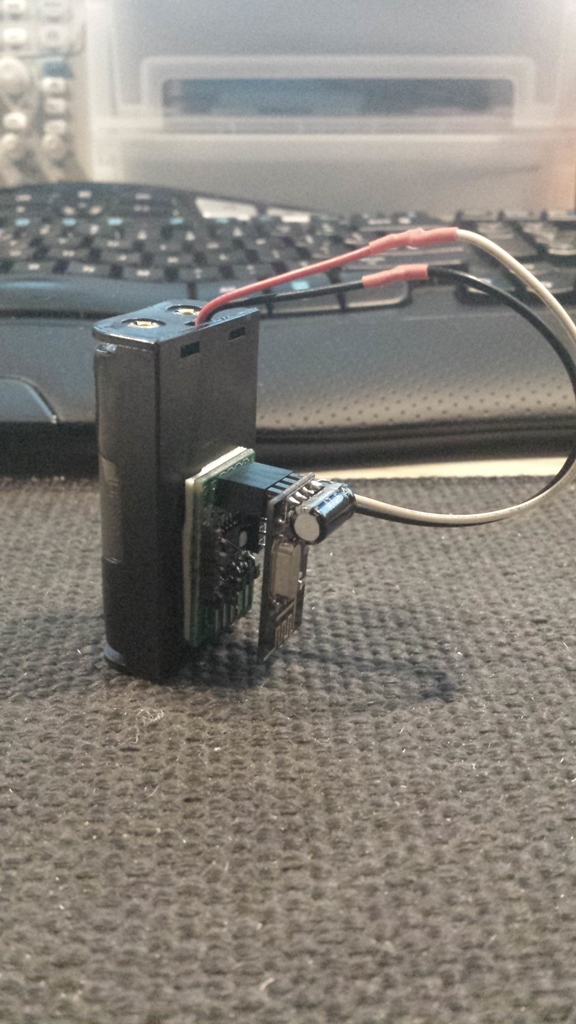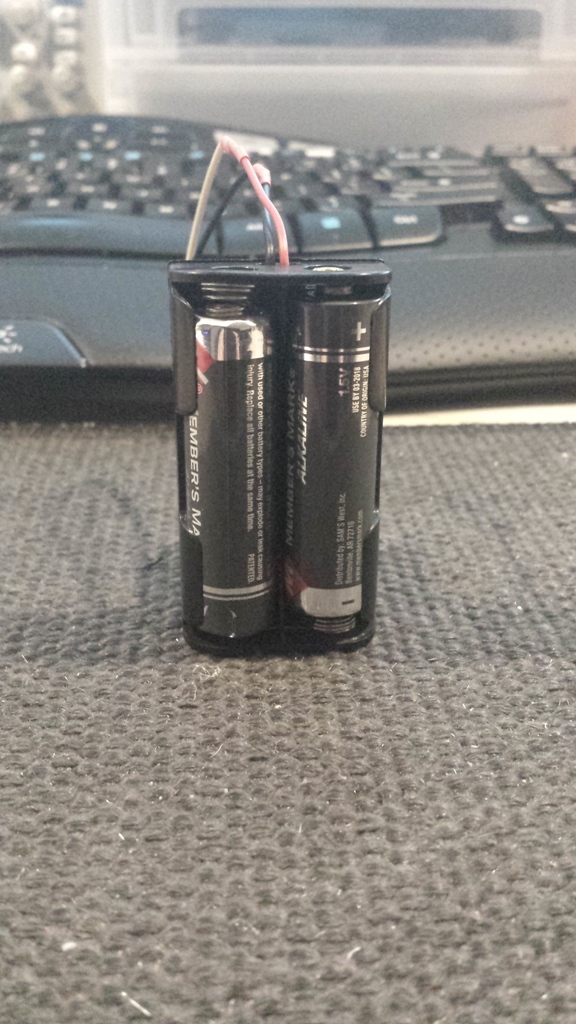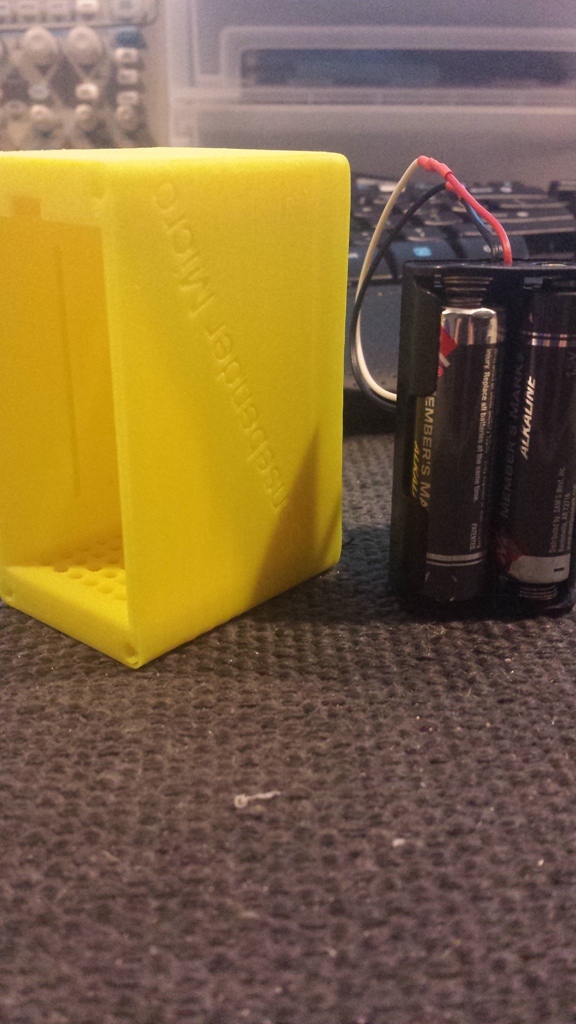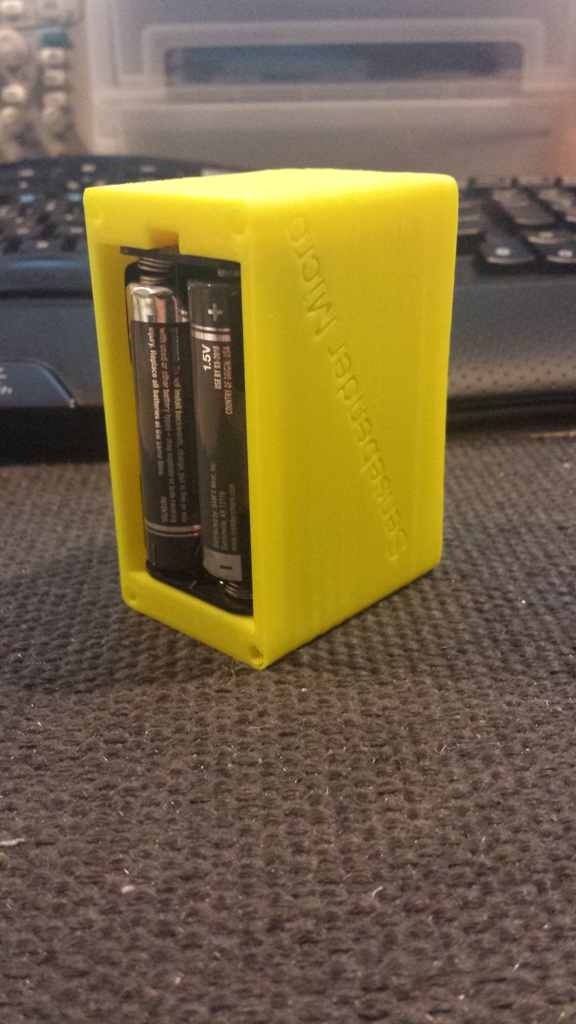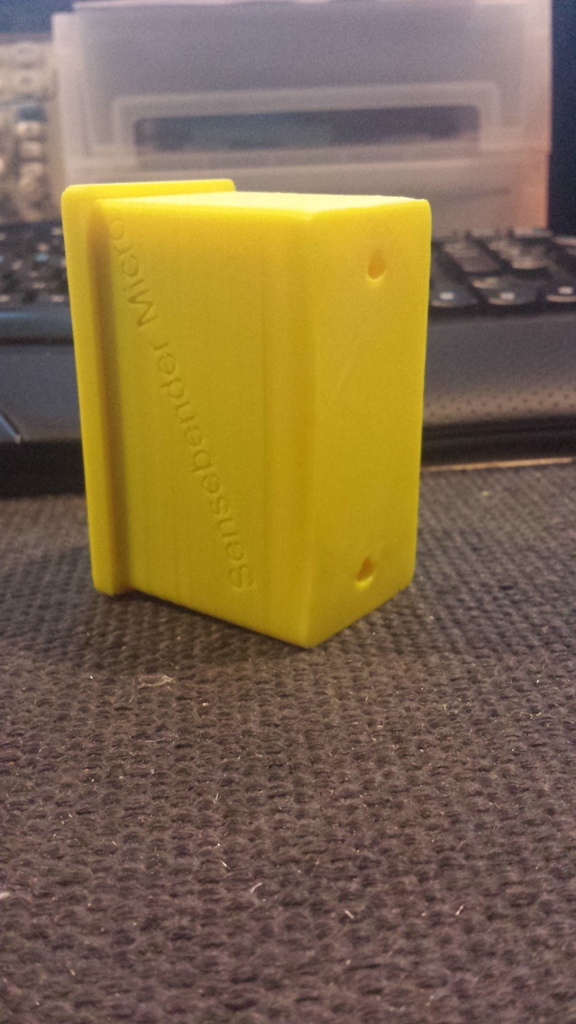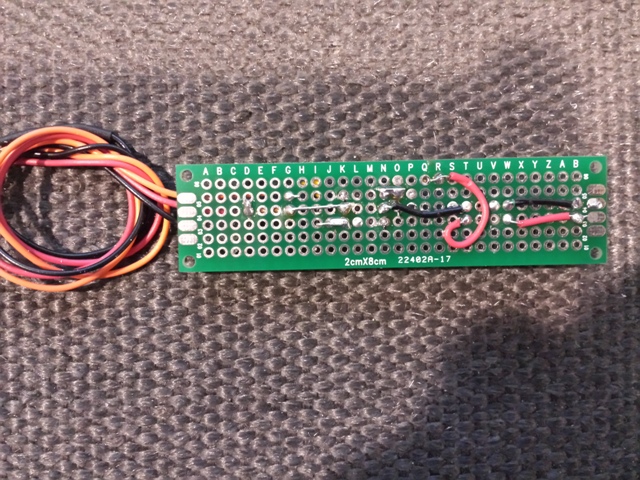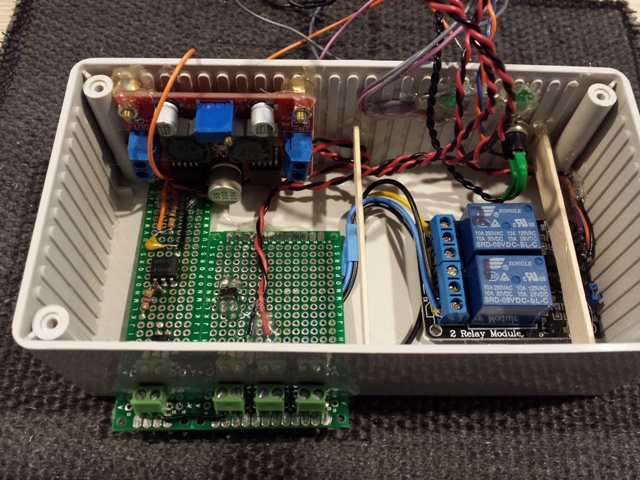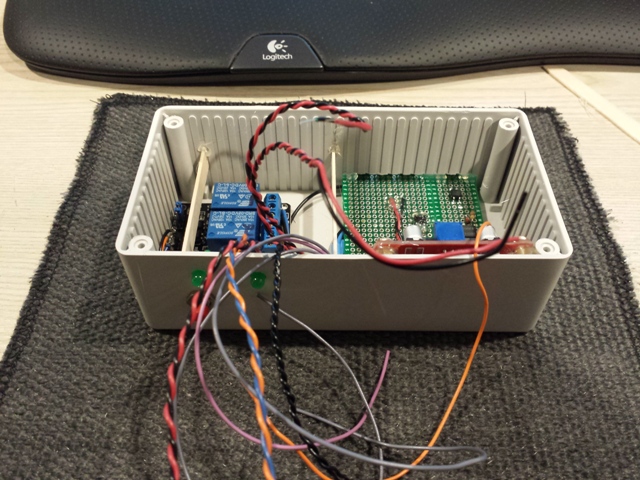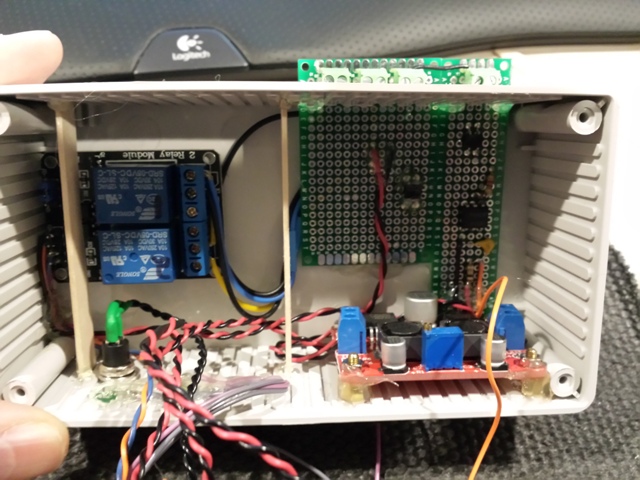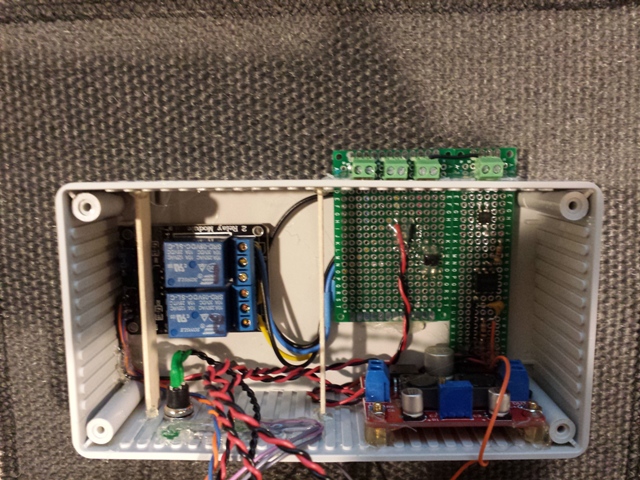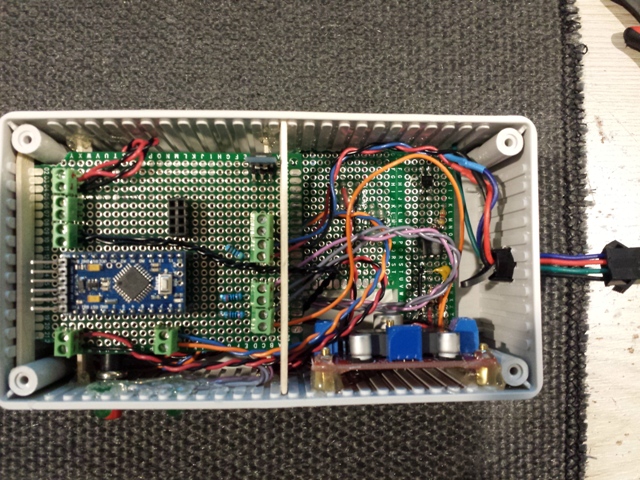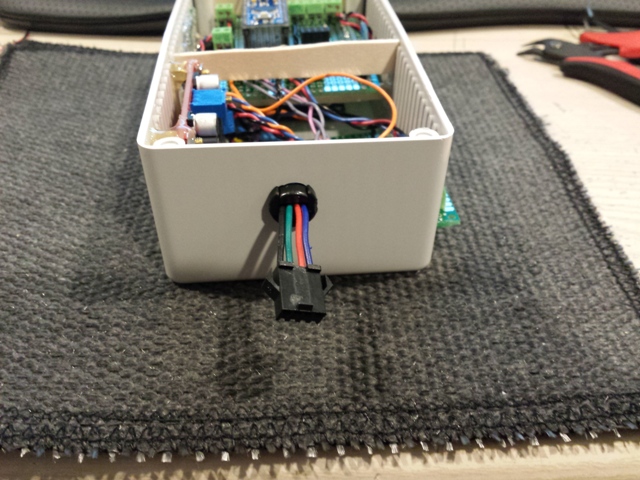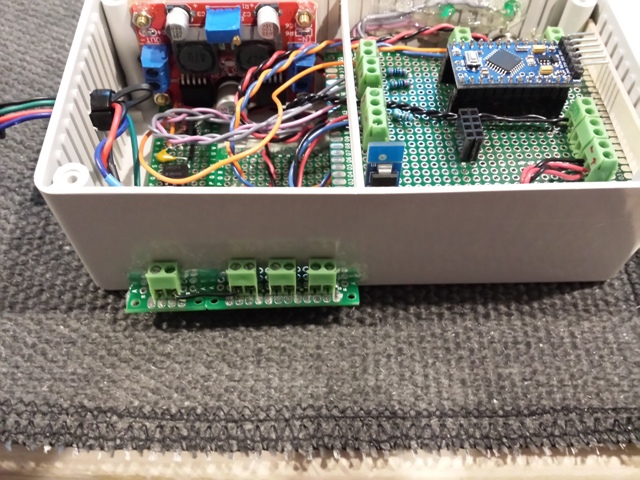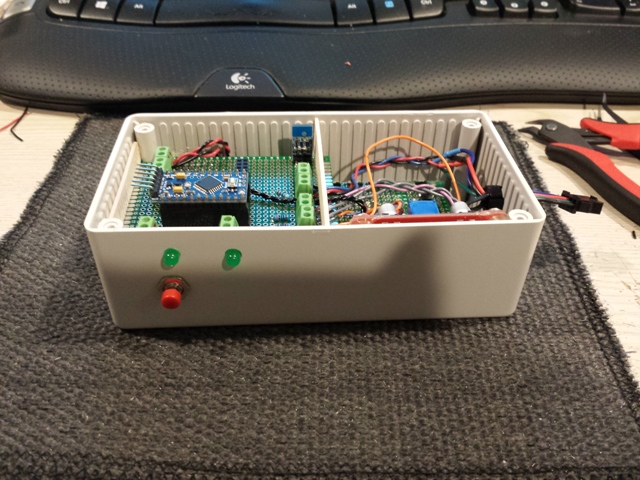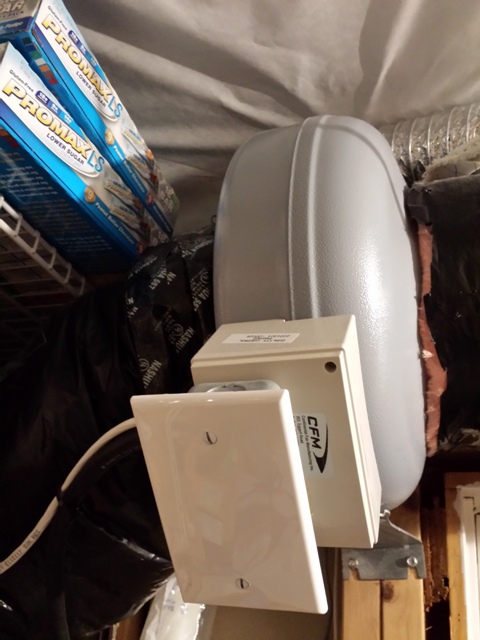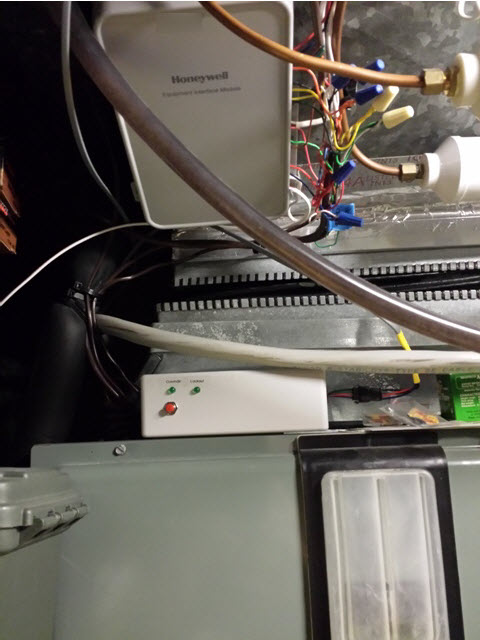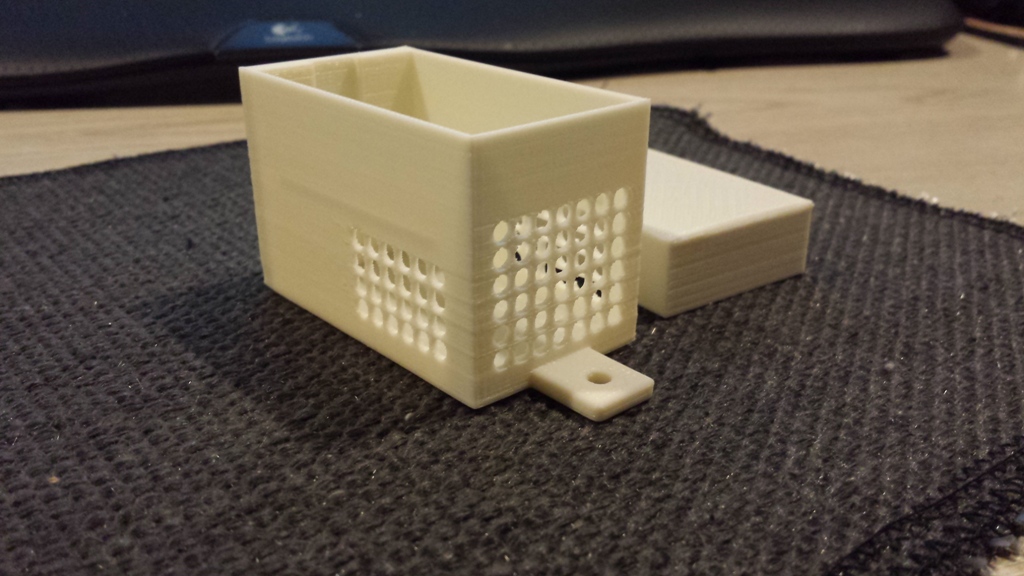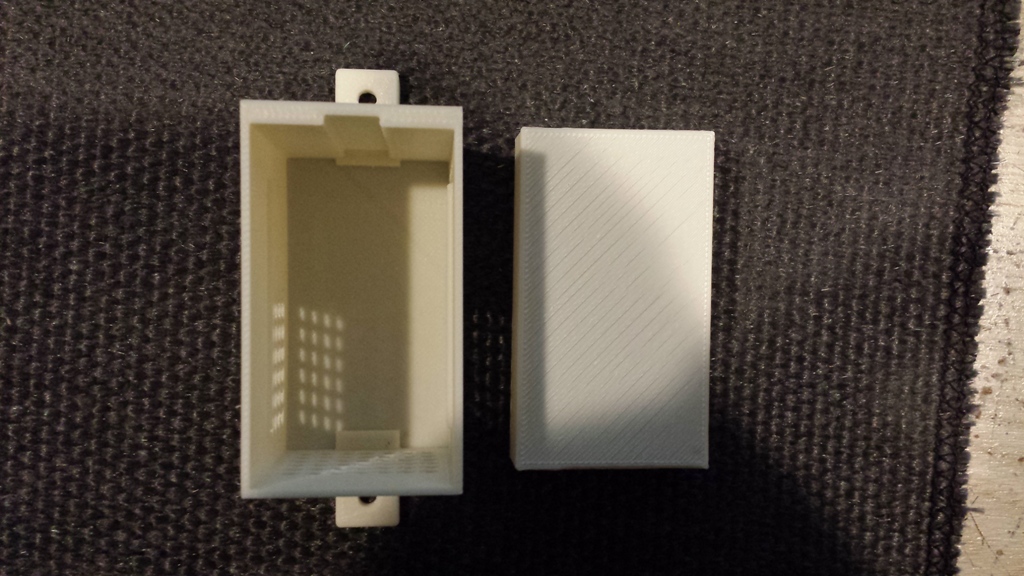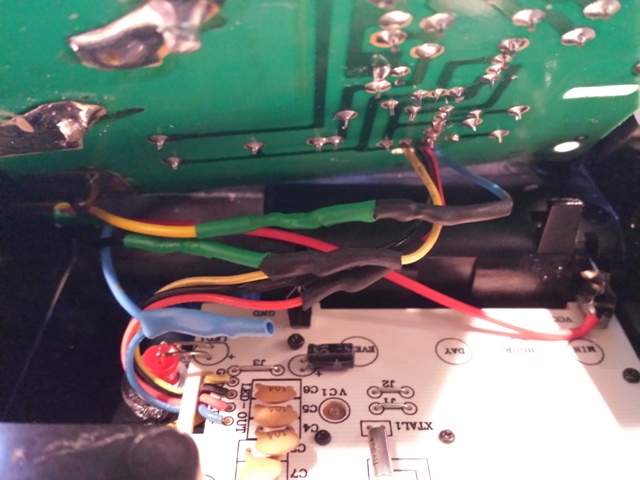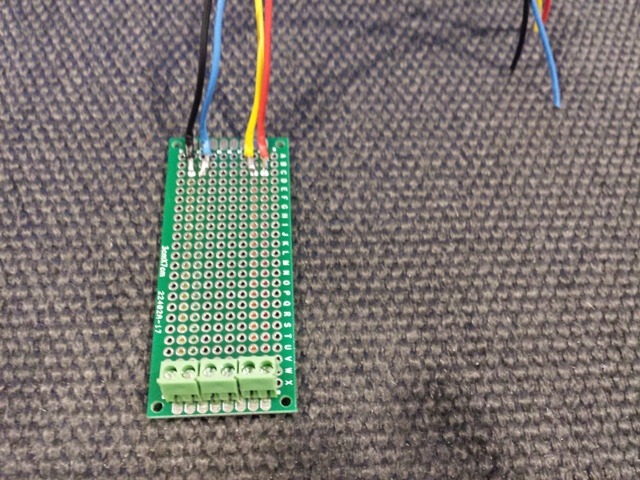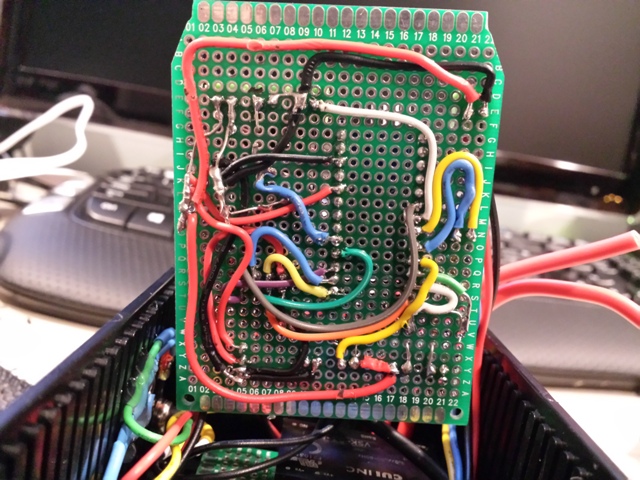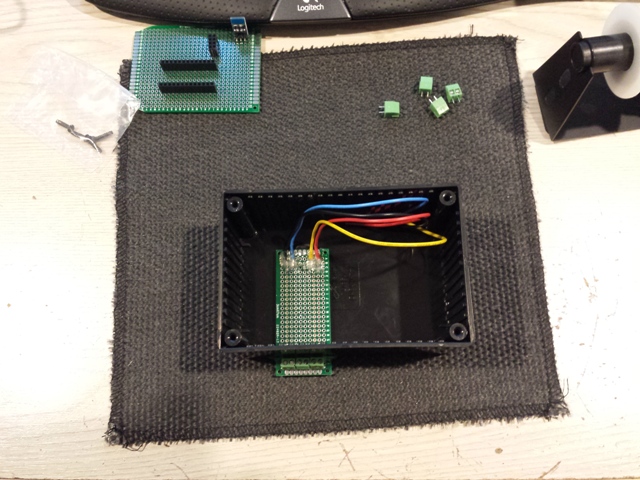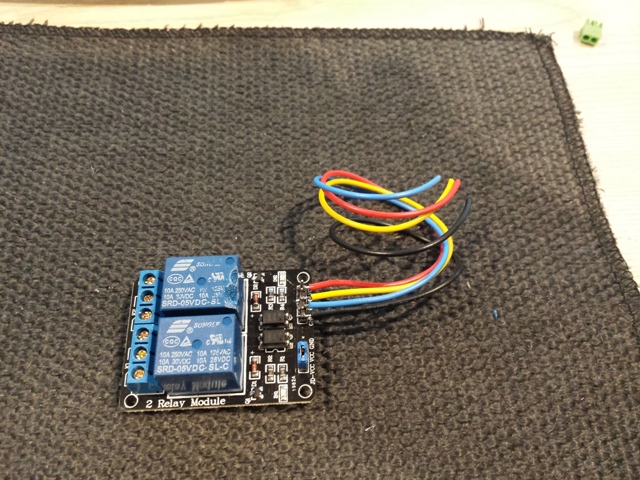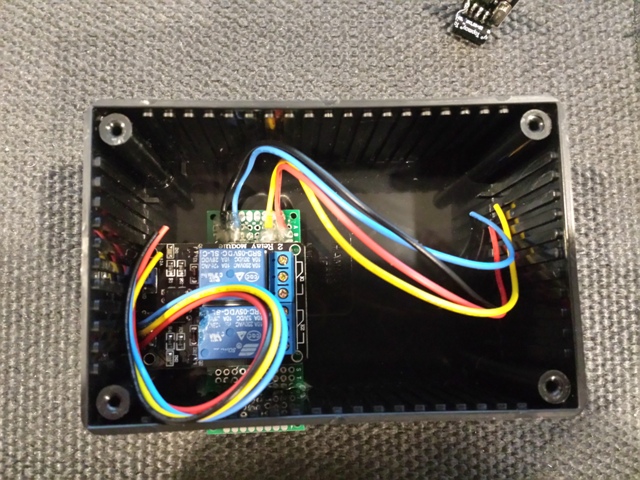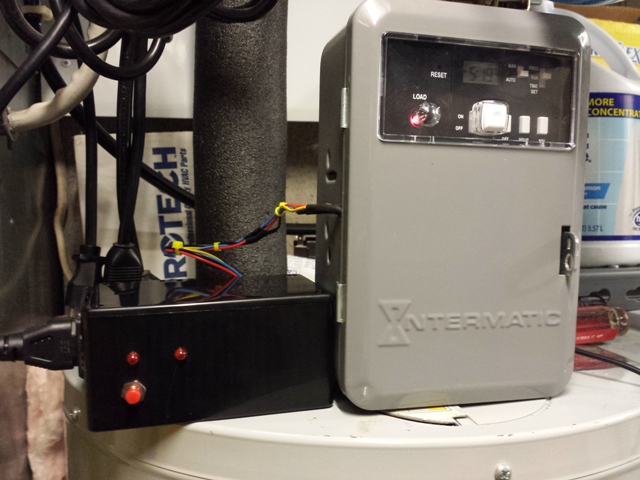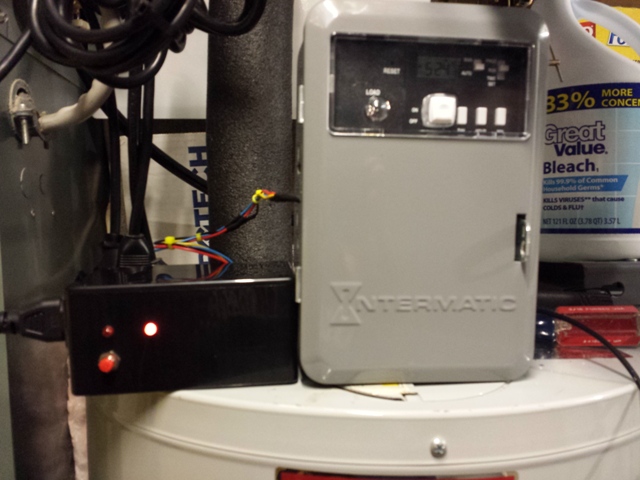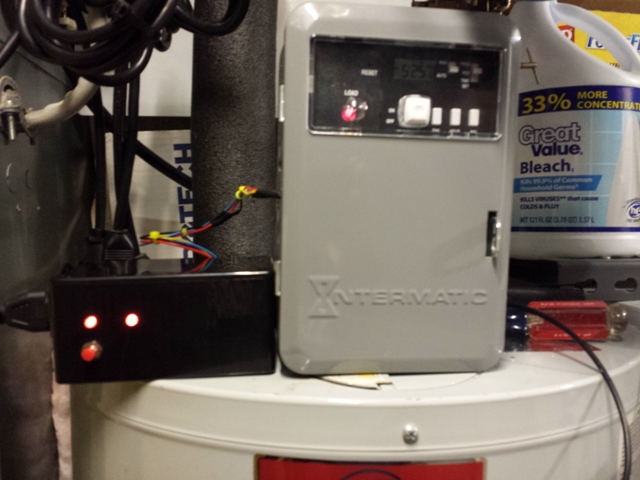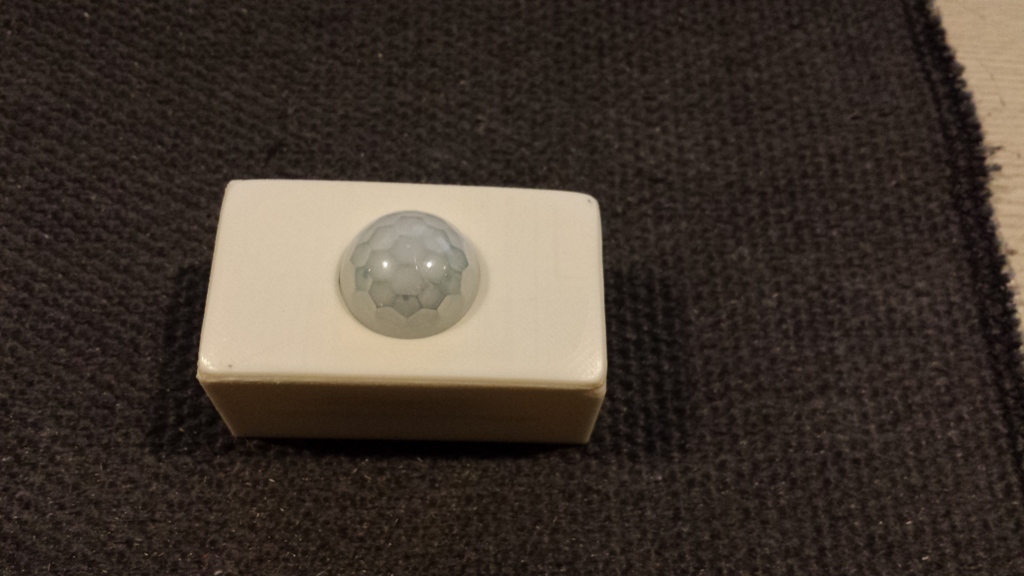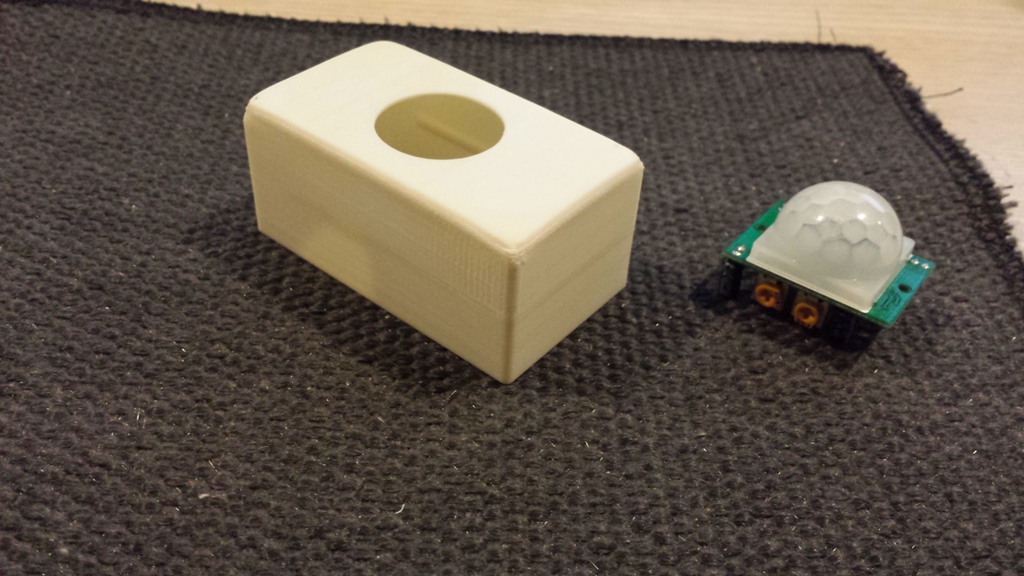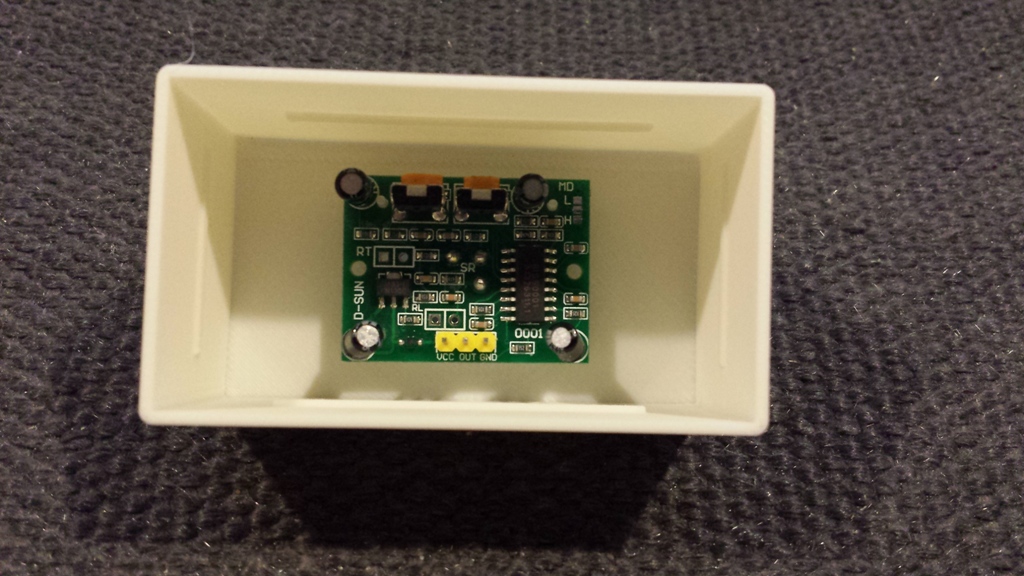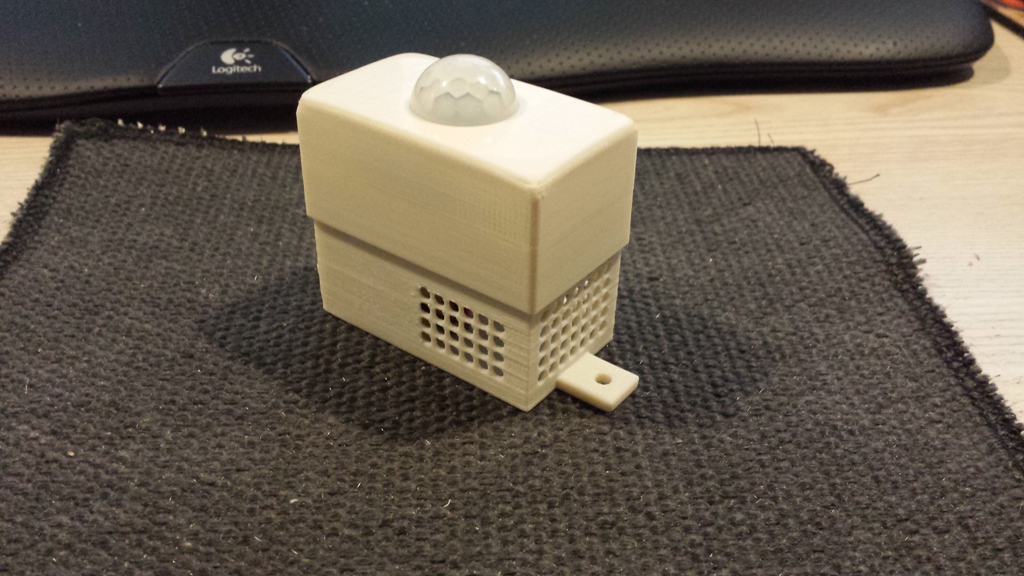This is another very simple "Wash Cycle Completed" sensor. It's design uses the same Optocoupler sensing design I used in the Kiddie Smoke Detector project. The only difference is that I'm using 1 AC to DC transformer, and a boost module to boost the washer speaker power to fire the Optocoupler.
Parts:
- 1 Cheap AC/DC converter
- 1 Optocoupler
- 1 Step up Regulator
- 1 Small Proto Board.
- Some wire
Highlights:
Use the Washers .5vdc Signal Piezo to interface with the Pro-Mini. The voltage to the Piezo is to low to drive the Optocoupler so I had to use a boost module to boost the voltage to the Optocoupler. I'm not sure what the long term effect will be on washers control board Piezo drive circuit, so I will follow up if I encounter a problem.
Again Uses the same sketch as the Kiddie Smoke Project, with the only change being to CYCLE_INTERVAL (For my dryer 3 works well)
Sketch:
// Based on Author: Patrick 'Anticimex' Fallberg Interrupt driven binary switch example with dual interrupts
#include <MySensor.h>
#include <SPI.h>
#define SKETCH_NAME "Washer End Cycle"
#define SKETCH_MAJOR_VER "1"
#define SKETCH_MINOR_VER "1"
#define CHILD_ID 3
#define SIREN_SENSE_PIN 3 // Arduino Digital I/O pin for optocoupler for siren
unsigned int SLEEP_TIME = 32400; // Sleep time between reads (in seconds) 32400 = 9hrs?
long CYCLE_COUNTER = 3; // This is the number of times we want the Audio Counter to reach before triggering a signal to controller.
unsigned long CYCLE_INTERVAL = 3; // How long do we want to watch once first detected (in seconds)
//Adjust for your smoke detector, you want to pick up the siren signal at least 3 time to help stop false alarms.
unsigned long CYCLE_RATE = 90; // How fast do we want to move checking the Pin state in the Status Check (in Millis) Adjust for your smoke detector
//Adjust for your smoke detector, you want to pick up the siren signal at least 3 time to help stop false alarms.
unsigned long CYCLE_TIME_OKSTATUS = 8; // How long do we want to watch for "all clear" once we have confirmed an Alarm (in seconds)
unsigned long CYCLE_RATE_OKSTATUS = 500; // How fast do we want to move checking the Pin state when checking for an OK status (in Millis)
int oldValue=1;
int value=0;
MySensor sensor_node;
MyMessage msg(CHILD_ID, V_TRIPPED);
void setup()
{
sensor_node.begin();
// Setup the Siren Pin HIGH
pinMode(SIREN_SENSE_PIN, INPUT_PULLUP);
// Send the sketch version information to the gateway and Controller
sensor_node.sendSketchInfo(SKETCH_NAME, SKETCH_MAJOR_VER"."SKETCH_MINOR_VER);
sensor_node.present(CHILD_ID, S_SMOKE);
//Send the state -- Always send Alarm state on power up.
sensor_node.send(msg.setSensor(CHILD_ID).set("1"), true);
}
// Loop will iterate on changes on the BUTTON_PINs
void loop()
{
// Check to see if we have a alarm. I always want to check even if we are coming out of sleep for heartbeat.
AlarmStatus();
// Sleep until we get a audio power hit on the optocoupler or 9hrs
sensor_node.sleep(SIREN_SENSE_PIN-2,FALLING, SLEEP_TIME * 1000UL);
}
void AlarmStatus()
{
// We will check the status now, this could be called by an interrupt or heartbeat
int siren_audio_count =0;
long cycle_time =0;
unsigned long startedAt = millis();
Serial.println("Status Check");
//Read the Pin
value = digitalRead(SIREN_SENSE_PIN);
// If Pin return a 0 (LOW), then we have a Alarm Condition
if (value != 1) {
//We are only going to check for status for CYCLE_INTERVAL time I think this should help stabilize Siren Sensing
while(millis() - startedAt < CYCLE_INTERVAL * 1000)
{
//We are going to check CYCLE_RATE fast
if(millis() - cycle_time > CYCLE_RATE ) {
// save the last time you Checked
cycle_time = millis();
//We will count each time SIREN_SENSE_PIN is 0 (Alarm - LOW) for the above time and at the above rate.
value = digitalRead(SIREN_SENSE_PIN);
if (value != 1)
{
siren_audio_count++;
Serial.print("Audio Count: ");
Serial.println(siren_audio_count);
}
}
}
// Eval siren audio hit count against our limit. If we are => then CYCLE_COUNTER then lets start a loop for "All Clear" reset
// If we continue to return an audio power hit, then we will continue to send to the controller.
if (siren_audio_count>=CYCLE_COUNTER)
{
Serial.println("Alarm Detected");
do
{
//update gateway with bad news.
//sensor_node.send(msg.set("1"));
sensor_node.send(msg.setSensor(CHILD_ID).set("1"), true);
Serial.println("Alarm Detected Sent to gateway");
} while (IsAlarmAllClear()!=1);
}
}
//Pin returned a 1 (High) so there is no alarm.
else
{
IsAlarmAllClear();
}
}
int IsAlarmAllClear()
// We are looking for an gap in time that we no longer see an audio power hit to the optocoupler.
{
int alarmOn =0;
long cycle_time =0;
unsigned long startedAt = millis();
//We are only going to check for status for CYCLE_TIME_OKSTATUS time
while(millis() - startedAt < CYCLE_TIME_OKSTATUS * 1000)
{
//We are going to check CYCLE_RATE_OKSTATUS fast
if(millis() - cycle_time > CYCLE_RATE_OKSTATUS) {
// save the last time you Checked
cycle_time = millis();
int value = digitalRead(SIREN_SENSE_PIN);
if (value != 1) //We are still in an alarm state
{
alarmOn++;
}
}
}
if (alarmOn < 1)
{
// We don't have any sign that we are still in an alarm status
//Send all clear msg to controller
//sensor_node.send(msg.set("0"));
sensor_node.send(msg.setSensor(CHILD_ID).set("0"), true);
// Used to update the node - NOT used for battery check.
sensor_node.sendBatteryLevel(random(1, 100) );
Serial.println("All Clear");
return 1;
}
else
{
// We are still in an alarm status
//The calling function will handle sending NOT CLEAR to controller
Serial.println("NOT CLEAR");
return 0;
}
}
Here a some Pictures:
